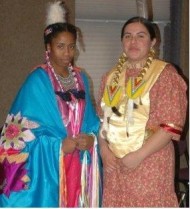Halito (Hello)
I have always had a passion for culture, not just my own, but all cultures of the world. As a young child I found myself drawn to museums, festivals, dances, powwows, and any other event that allowed me the opportunity to learn about different cultures through the eyes of those who it belongs to. It was not until I was much older I realized that all of these things fall under a field that is called Public History. As a 2011 Candidate for the Masters of Arts in Heritage Resources (MAHR) program at Northwestern State University (Natchitoches, Louisiana), and a Graduate Assistant For the Williamson Museum at Northwest State University, I have had plenty of opportunities to sharpen my skills in Public History. This program has allowed me to explore the fields of Interpretation, Oral History, Ethnography, Anthropology, Archeology, Exhibit design, and Museum curation.
Our society is built on the different cultures that are held within its borders. These cultures have their own stories. Through my studies I have acquired skills that enable me to help preserve, interpret, and document these stories in a way that accurately and honestly conveys significance to the outside world.





